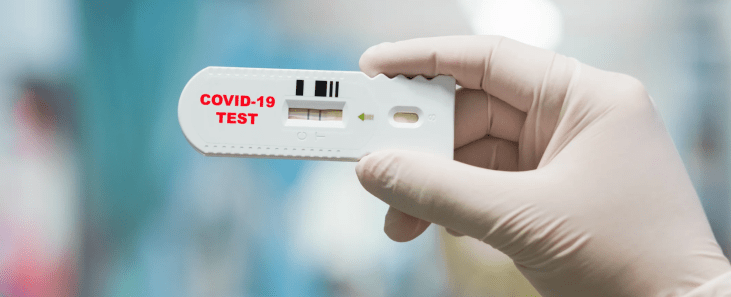COVID-19 Testing

Answers to common questions
The test for COVID-19 requires taking a sample from deep inside the passage that connects your nose and mouth. A long swab will be inserted up each nostril and far into that passage. It is not comfortable.
You may be asked to stay away from others (self-isolate) until you get the results. There are so many tests being done right now that getting the results can take several days.
The main reason to test people is to help prevent the spread of the virus.
- Testing can help identify who needs to be isolated so that they don't infect others.
- It can help find out when someone who's had COVID-19 is no longer a risk to others.
- It can help health experts understand how quickly and widely the virus is spreading in a community or state. This can affect local stay-at-home orders, school and business closures, and other guidelines.
Not everyone who has been exposed to COVID-19 or has symptoms needs to be tested.
It is most important to test:
- Patients in the hospital.
- Health care workers with symptoms.
- People at higher risk for serious illness who have symptoms.
If enough tests are available, other people who have symptoms or a history of recent, close contact with an infected person may be tested too. Decisions about who can be tested vary from one local community to another.
There are a limited number of test kits available. It also takes time and health care resources to collect the test samples and get the results.
Most people with COVID-19 have mild illness and can recover at home. And they can avoid spreading it by staying away from others. Having a test doesn't change that.
Call your doctor or your local health department. Whether you can be tested will depend on what's happening in your community.
If your test is positive
You have the virus. You need to stay home and avoid contact with anyone else, including those you live with, so that you don't spread it to them. Your doctor will tell you how long you need to self-isolate and what symptoms to watch for. There may also be instructions for people who have had recent, close contact with you.
If your test is negative
You probably weren't infected at the time of the test. But the test can miss some infections, especially early on. Watch for symptoms. Continue to take steps to avoid infection, such as washing your hands, using social distancing, and wearing a cloth face cover in public places. Your doctor will let you know if there are other instructions.
Current as of: May 8, 2020
Author: Healthwise Staff
Medical Review: Heather Quinn MD - Family Medicine & Lesley Ryan MD - Family Medicine
